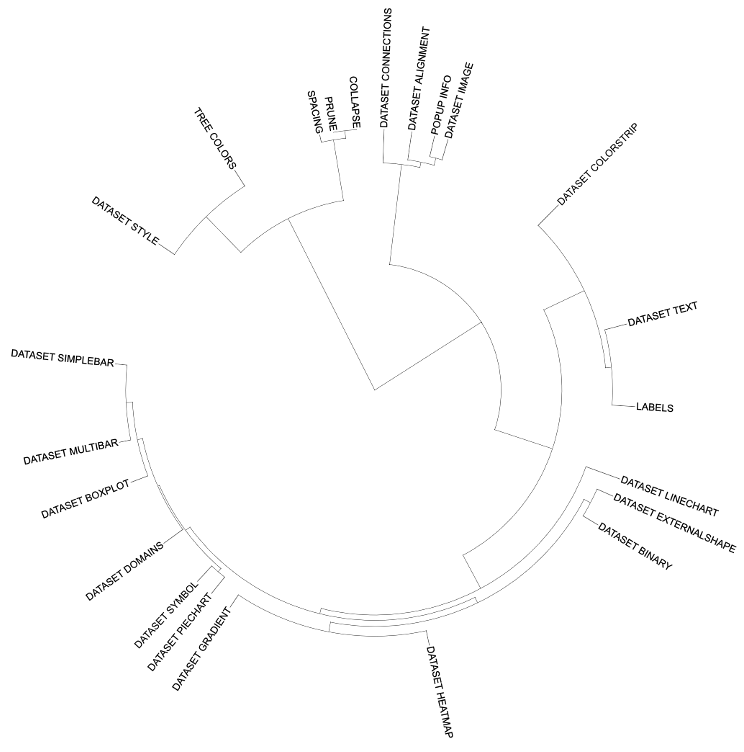Introduction
The function of SPACING template is to adjust the branch
spacing. Its parameter structure is simple, consisting only of template
types and data. The SPACING template belongs to the “Tree
structure” class (refer to the Class for detail
information).
Users typically adjust the spacing of branches by entering branch names and spacing values. The function of this template is very simple.
This section shows how to use itol.toolkit to adjust the spacing of branches. The process is very simple, and the main difficulty is that the user needs to determine which branches need to be adjusted. Without itol.toolkit, users would have to perform data analysis and visualization preparation in fragmented environments. itol.toolkit provides consistency to the workflow, allowing users to filter branches based on background information in R environment and output template files seamlessly.
Basic use
This section uses dataset 1 as an example. (refer to the Dataset for detail information)
The first step is to load the newick and . The following
example data df_frequence contains the usage of each
template type in published studies.
The purpose of our data processing in this section is to adjust the spacing of the branches.Based on usage data, the greater the usage, the greater the spacing of template types.
library(itol.toolkit)
library(data.table)
tree <- system.file("extdata",
"tree_of_itol_templates.tree",
package = "itol.toolkit")
df_frequence <- fread(system.file("extdata",
"templates_frequence.txt",
package = "itol.toolkit"))Sum the frequency of each template type used in published papers. In order to make the text content clear, the global font size has been adjusted to 35 on the iTOL console, with a rotation of 180 degrees, and an included angle of 180 degrees. To avoid overlapping when resizing fonts, set a base spacing of 2.
The final data has two columns: tip id and its corresponding space.
df_frequence <- data.frame(template = df_frequence$templates,
value = rowSums(df_frequence[,-1],na.rm = T) + 2)
unit_6 <- create_unit(data = df_frequence,
key = "E006_spacing_1",
type = "SPACING",
tree = tree)
write_unit(unit_6)
Branch spacing adjustment example
Note
SPACING is the only template function that the author
cannot think of as having any practical use. The actual effect of this
function is far from what authors expected (to highlight the key
points). If the upper and lower intervals of a branch can be defined,
this function can have practical use. If you can explore the use of this
function, welcome to contact me. This function is also the only one that
does not support node level manipulation. So it’s not surprising that
the usage rate of this feature is low.